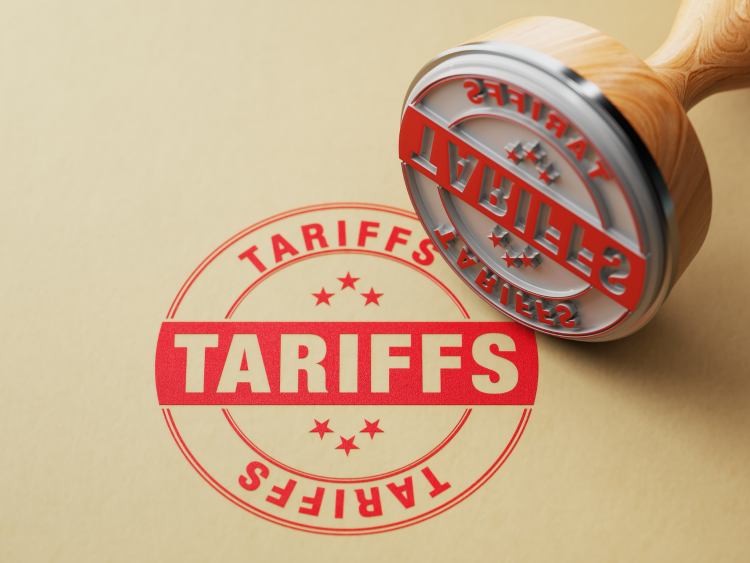Final Thoughts

May 30, 2025
The courts pause Trump tariffs…. more uncertainty
Written by Greg Wittbecker
A federal court on May 28 struck down many of the tariffs President Trump imposed.
The judgment from the Court of International Trade rules the tariffs Trump imposed on April 2 on most countries are illegal. The ruling also struck down separate tariffs Trump imposed on China, Canada, and Mexico, which the administration justified as a reaction to fentanyl trafficking.
In their ruling, the court’s three-judge panel ruled that Trump’s worldwide tariffs had exceeded his power under the International Economic Emergency Powers Act, or IEEPA, which was the justification for the tariffs.
“Because of the Constitution’s express allocation of the tariff power to Congress … we do not read IEEPA to delegate an unbounded tariff authority to the President,” the court wrote.
IEEPA had never been used to impose tariffs until President Trump did so.
The judgment came in a case brought against the administration by 12 states and five businesses.
While the court found Trump had exceeded his authority by imposing broad worldwide tariffs, the three-judge panel made a different argument in ruling against the fentanyl tariffs.
In that case, the court found that the president’s argument that the tariffs will create leverage to get countries to crack down on drug trade was the reason to invalidate IEEPA tariffs. Under IEEPA, the judges wrote, a tariff must directly “deal with” the emergency a president cites when imposing the tariff. The fentanyl tariffs do not directly address the drug trade.
Round 2- Appeals court pauses the court of International Trade ruling
On May 29, a Federal Appeals Court in Washington D.C. paused the ruling of the Court of International Trade and reinstated the Trump Administration’s tariffs.
The United States Court of Appeals for the Federal Circuit in Washington said it was pausing the lower court’s ruling to consider the government’s appeal and ordered the plaintiffs in the cases to respond by June 5 and the administration by June 9.
So, we are back to square one. The reciprocal tariffs as currently propagated stand. The new trade deal with the U.K. remains and the IEEPA duties are intact…subject of course to the various self-imposed pauses and conditions that the Administration now in place.
So, what’s next?
We wrote earlier this week that U.S. West Coast congestion was building as shippers from China hustled to make up for lost time in May plus gear up for the Christmas. This means shippers have until August 12 to get their goods in before the tariffs may move from 30% back to the 145% threatened originally.
This means continued escalating container freight cost increases and some bottlenecks on goods clearing through Long Beach and Los Angeles.
The 25% IEEPA duties applied to Canada and Mexico remain in place, subject to the carveouts for crude oil and potash, which had their duties reduced to 10% due to their classification as critical minerals.
Most importantly, duties on aluminum and derivative products originating in both countries remain subject ONLY to Section 232 tariffs of 25%, In other words, the IEEPA tariff of 25% is not “stacked” on top of Section 232. This provision still places a huge burden on importers from the respective countries to prove that their goods are “USMCA-compliant,” meaning they must demonstrate they have been “wholly produced “within the respective country and were produced with materials originating with the USMCA.
The production qualification is easy, the issue of what percentage of USMCA origin raw materials must be used is not clear.
When USMCA was ratified, specific products such as automotive products had discrete specifications for rules of origin. 70% of the aluminum used in the products had to come from North America.
Some rulings have been made with respect to aluminum billets indicating that if non-USMCA origin materials were less than 10%, the production would be compliant. However, we have not seen enough rulings from U.S. Customs and Border Production (USCBP) to declare that 90% USMCA-origin materials is the standard.
We suspect that as we write, OEMs in Mexico are asking for clarification as to what the percentages must be to avoid getting hit with the additional IEEPA duty.
For now, what is clear is that Section 232 has survived the latest legal challenge and 25% on all aluminum remains.
Stay tuned for rulings on the Mexican OEM cases for white goods, electronics and other aluminum-intensive goods that might get caught up in this confusing tariff dragnet.





